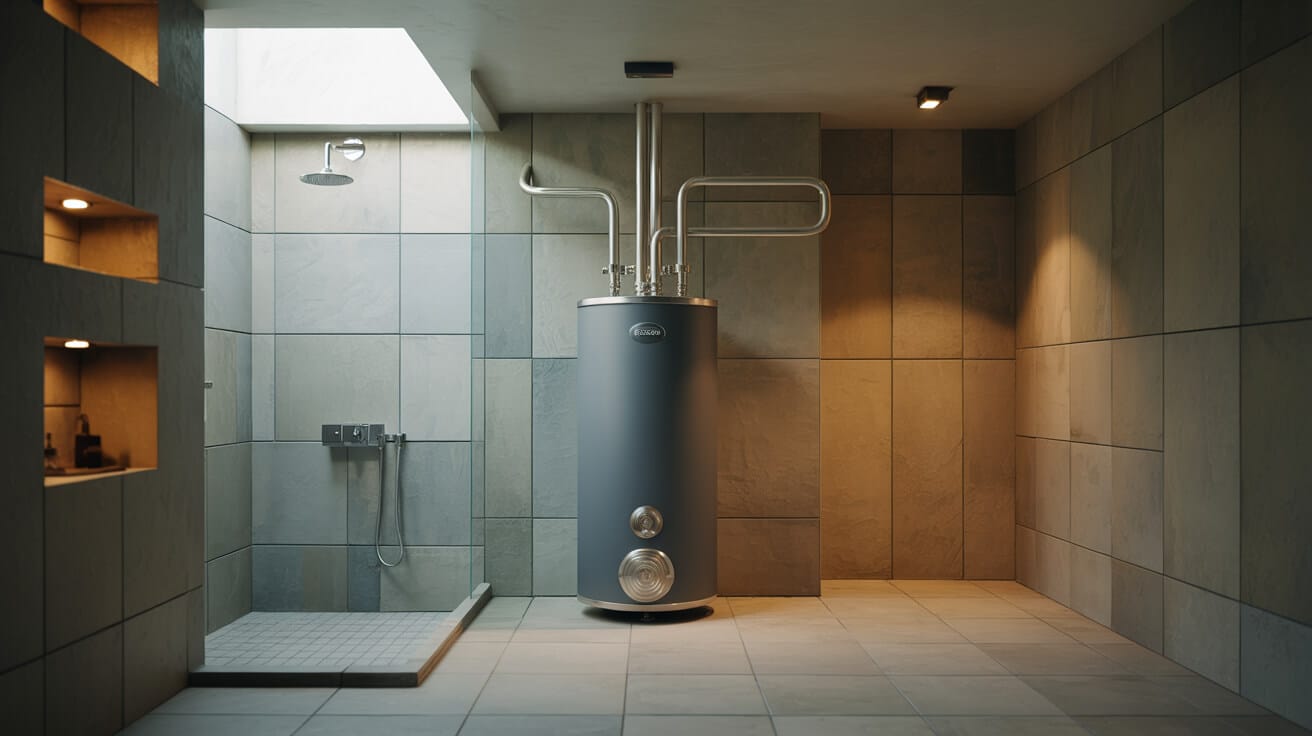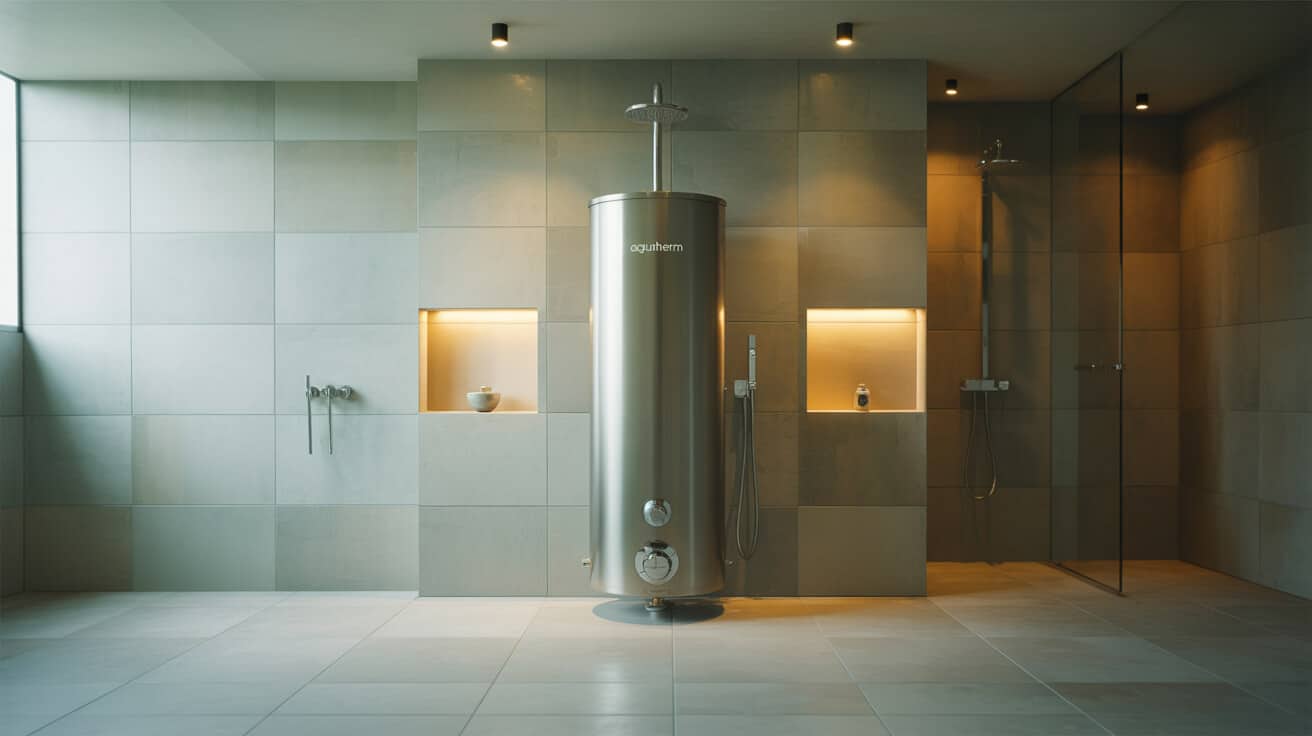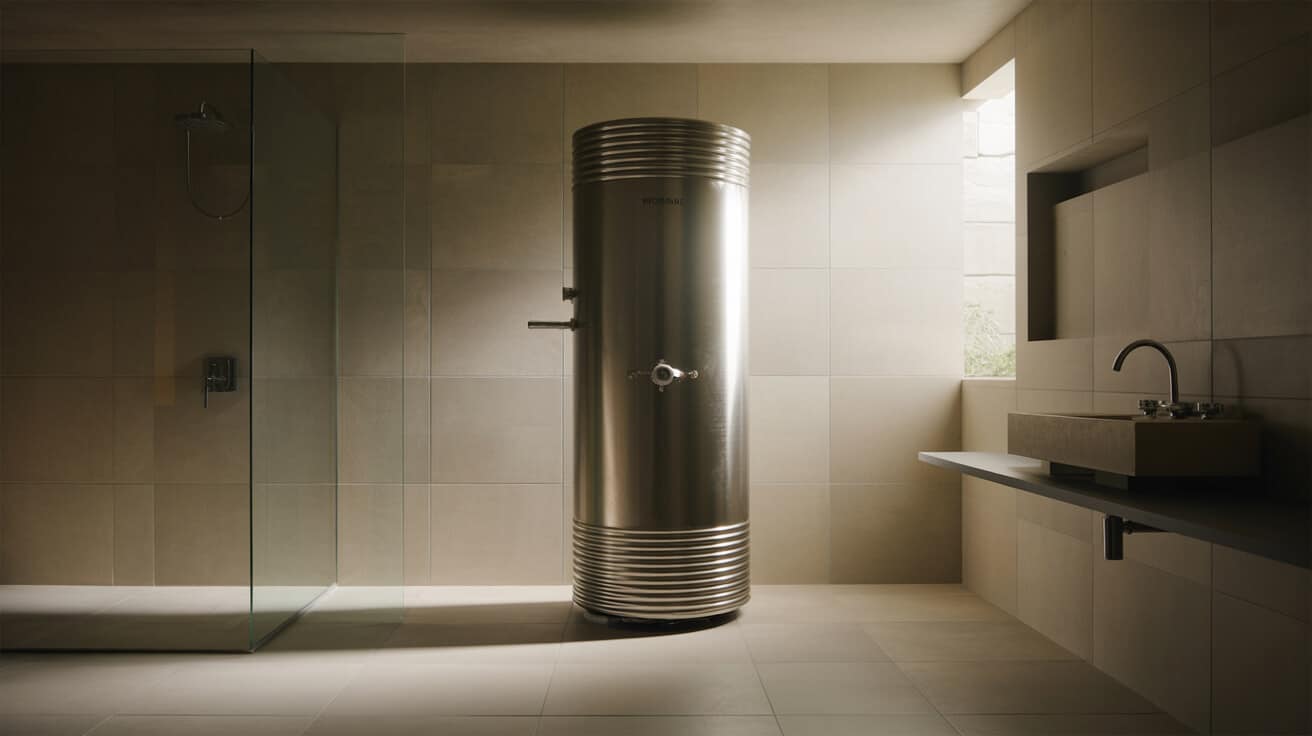Designed to accommodate the integration of renewable energy sources, such as solar thermal collectors or heat pumps, alongside gas or oil boilers, twin coil cylinders offer a significant upgrade over single coil or direct systems. The use of two heat exchanging coils allows intermittent or concurrent charging from different sources, optimising energy harvest and providing resilience for your property. Regulatory frameworks and decarbonization incentives increasingly recognise such systems as both a future-proofing tool and an efficient route to higher energy performance certificate (EPC) ratings, contributing directly to compliance and value preservation for your company, organisation, or private asset.
Etymology or name origin
The term “twin coil” concisely describes the dual internal coil structure fundamental to the device’s design. Each coil—crafted from copper, stainless steel, or other heat-conductive material—functions as a serpentine heat exchanger within the cylinder. This distinguishes the system from single coil, thermal store, or direct immersion cylinders, where the heat source is singular or applied directly to the stored water. Industry and regulatory standards employ “twin coil” as a technical descriptor, referencing its ability to mediate the transfer of heat from separate sources into a single potable water reserve.
Overview / context
Twin coil hot water cylinders have become a mainstay of advanced hot water delivery systems. Initially championed for enabling renewable energy integration, these units are now frequently specified for both new builds and retrofits. Your company may select such a system to future-proof properties against increasing fuel costs or regulatory tightening. In the UK and across Europe, intertwined policy and technical signals—from EPC improvement drives to grant eligibility (BUS, ECO4)—drive adoption. The cylinder serves not only as a passive reservoir but as an active mediator, enabling layered heating strategies and flexible upgrades.
A typical installation sees one coil dedicated to a renewable source (such as a solar thermal array or heat pump) while the second coil connects to a conventional boiler or backup system. The result is a simultaneous prioritisation of low-carbon heat and security of supply.
History
Origins
Early storage-based hot water technologies utilised direct heating or single coil arrangements, appropriate only where a solitary heat source was present. The emergence of structured central heating and property-wide pipework, coupled with demand for hot water in multiple zones, propelled the need for greater heat source flexibility. The “twin coil” concept matured with the rise of solar energy research in the 1960s and 1970s, as engineers explored ways to harvest and store intermittent solar gain while providing reliable water heating throughout the year.
Industrial emergence
The widespread transition to gas-fired central heating during the late 20th century presented new opportunities for more complex cylinders. The need to interface between solid-fuel, solar, and gas systems, especially in areas with adequate sunlight or progressive energy codes, cemented the twin coil format as a recognised industry standard. Product standardisation advanced through iterations of British Standards, Water Regulations Advisory Scheme (WRAS) protocols, and Building Regulations (notably Part G and G3 in the UK).
Contemporary evolution
Recent decades have witnessed an emphasis on life-cycle asset value, environmental impact, and digital controls. Smart thermostatic zoning, programmable timers, and higher insulation standards have made twin coil cylinders practical for everyday application in buildings of all sizes. Technological improvements allow your organisation to deploy cylinders with compact footprints, rapid recovery rates, and serviceable components. Companies such as Plumbers 4U have adapted service models around compliance, electronic verification, and tailored maintenance schedules to reflect evolving best practice.

Concept / description
A twin coil hot water cylinder comprises an insulated vessel—commonly of stainless steel or corrosion-resistant copper—containing two discrete serpentine or helical heat exchanger coils. These coils are deliberately positioned at different heights to optimise stratification and thermal gain: typically, the lower coil is designated for renewable integration, while the upper or mid-placed coil connects to a boiler.
Internal structure
- Cylinder shell: Encases potable water, designed for either gravity-fed (vented) or pressurised (unvented) operation.
- Lower coil: Connects to solar thermal or alternative low-grade source, exploiting the lower, cooler water zones for maximal heat absorption.
- Upper coil: Connects to conventional boiler, ensuring a guaranteed minimum water temperature.
- Ancillary components: These include a temperature and pressure relief valve (TPRV), expansion vessel (unvented systems), thermostatic mixing valve (TMV) for anti-scald protection, a tundish for visual discharge monitoring, and a backup electric immersion heater.
Principle of operation
Heated fluid from each external source circulates through its respective coil. As thermal energy passes through coil walls into the stored potable water, stratification ensures the hottest water remains at the top—closest to outlets. Internal sensors and thermostats monitor temperature, while blending valves ensure anti-scald delivery. Your company may select direct-flow designs, circulate secondary return pipework for long distribution runs, or employ integrated control modules for coordinated operation.
Insulation
Modern cylinders are supplied with factory-applied polyurethane or similar closed-cell foam, minimising standing heat loss and ensuring high recovery metrics. Insulation is often colour-coded and compliant with regulatory minimums. In hard water regions, anti-limescale devices or secondary treatments are often specified to maintain coil integrity.
Functionality / purpose / applications
The primary function of a twin coil hot water cylinder is to manage and store hot water for on-demand delivery across varied property types, optimising for both energy efficiency and supply certainty.
Integrated energy strategies
- Renewable prioritisation: The cylinder’s dual-coil format allows the prioritisation of renewable energy—solar thermal, air source, or ground source heat pumps—exploiting free or low-carbon energy before activating the boiler.
- Energy security: Should renewable resource become unavailable (e.g., lack of daylight, system fault), your cylinder’s conventional source ensures continuous hot water, protecting your organisation from downtime.
- Managed comfort: Thermostatic controls, programmable logic, and zoning capabilities enable delivery of hot water tailored to occupancy profiles and usage peaks.
- Scalability: High-capacity commercial variants, often exceeding 500 litres, furnish hotels, hospitals, and institutional kitchens with reliable hot water.
Application snapshot
| Application Domain | Primary Value |
|---|---|
| Detached home | High efficiency, renewable compatibility |
| Apartment building | Zoned supply, safety compliance |
| Office/Hospitality | Resilience, legal certification |
| School/Care home | Demand tracking, legionella compliance |
| Retrofit/upgrade | EPC enhancement, grant eligibility |
Classifications / types / variants
Twin coil cylinders are segmented along several axes:
Feed regimes
- Vented: Employs header tanks, open to atmosphere, gravity-fed; simpler resilience but less pressure, typical for older buildings.
- Unvented: Sealed, utilises expansion vessel and safety valves; offers higher water pressure and is standard in contemporary buildings. Requires G3 certification for installation.
Source integration
- Boiler + solar thermal: The most prevalent, with solar coil (lower) and boiler coil (upper).
- Boiler + heat pump: Used in highly insulated or off-grid properties.
- Boiler + district heating: Relevant to multi-resident facilities; requires bespoke plumbing and controls for isolation.
Size, material, and orientation
- Capacity: Domestic 120–300 litres; commercial up to 1000 litres or modular banks.
- Material: Stainless steel is corrosion-resistant, light, and compliant with potable use. Copper remains common for its conductivity, though it is heavier and prone to oxidation without coating.
- Orientation: Vertical is most common; horizontal models exist for attic or confined installations.
Regulatory and brand distinctions
- Brands: Notable manufacturers include Heatrae Sadia (Megaflo), Gledhill, RM Cylinders, OSO, Kingspan, Albion, Ariston, Andrews Water Heaters, Telford.
- Regulations: All must be WRAS approved, benchmark-certified, and installed to Building Regulations for your local authority.
Systems / tools / methodologies
Installation methodology
- Site assessment: Space, load, and discharge route determine viable options.
- Sizing calculation: Based on property occupancy and peak demand—essential for compliance and comfort.
- Device selection: Material, capacity, insulation, coil layout, and extras (immersion heater, stat upgrades).
- Installation: Carried out by G3-qualified personnel, with static and dynamic pressure tests, pipework routing, lagging, and control setup.
- Commissioning: Calibration, TPRV operation, Benchmark log entry, and cross-check to local water authority standards.
Servicing protocols
- Annual checks: Safety valve, expansion vessel, blending valve, control system.
- Descaling/flushing: Regionally adjusted based on water hardness.
- Electrical checks: For immersion heaters and controls.
- Log maintenance: Ensures continuous warranty coverage.
- Emergency isolation and fault diagnosis: Managed by service providers such as Plumbers 4U, who are certified in rapid response and compliance.
Tools
- Pressure gauges/metres, thermal probes, endoscopes, cleaning rods, sealant kits, and manufacturer-specific adjustment wrenches.

Stakeholders / entities involved
Twin coil hot water cylinder adoption requires engagement from multiple parties:
- Homeowners and landlords: Oversee system selection for value, comfort, and regulatory assurance in their property.
- Letting agents and facilities directors: Focus on compliance intervals, legal exposure, and repair history, often as part of broader property portfolios.
- Installers (Plumbers 4U and peers): Take legal responsibility for correct setup, issue service logs, and act as first-line troubleshooters.
- Manufacturers: Define warranty conditions, provide installation and service guidance, and maintain product standards.
- Regulatory bodies: Ensure certification of installers, compliance inspection, and enforcement of safety/environmental directives.
- Warranty and service firms: Track lifecycle support to prevent insurance or regulatory lapses.
Legal / regulatory / ethical considerations
UK-specific requirements
- Building Regulations Part G (Sanitation & Hot Water Safety): Sets design and installation standards; requires temperature blending, anti-legionella measures, and safe discharge.
- G3 certification: Mandates installer accreditation for unvented cylinders; applies to most twin coil systems.
- WRAS approval: Ensures materials and valves are suitable for potable water use.
- Benchmark logbook: Serves as official record of proper commissioning, and essential for maintaining warranty and insurance.
- Legionella risk management: Annual risk assessments are legally expected in multi-user environments; compliance is required for landlords.
- Health and safety: Statutory negligence can result if property owners neglect regular maintenance or landlord obligations.
Ethical and environmental context
Your company is responsible for maintaining safe, efficient systems. Neglecting maintenance or compliance may expose tenants, employees, or your organisation to health risks and liability. Ethically, installing for full renewable compatibility and maintaining WRAS and G3 standards supports community wellbeing and reduces negative environmental impact.
Performance metrics / data / measurements
| Metric | Unit / Standard | Typical Domestic Value |
|---|---|---|
| Capacity | Litres | 120–300 L |
| Recovery rate | Litres/hour at set kW | 20–40 L/kW/hr |
| Insulation thickness | mm (per standard) | 50–60 mm (min) |
| Pressure rating | Bar | 3–6 bar |
| Standing heat loss | kWh/24hr | ≤2 kWh/24hr |
| Energy efficiency | EPC / ErP label (where applicable) | Class B or better |
- Hot water recovery: varies by coil source, cylinder height/diameter, stratification efficiency, and input temperature.
- Pressure and flow: are site-dependent but must pass minimum code for all outlets.
- Annual maintenance: validates performance via logbook, ensuring records for warranty and inspection.
Challenges / barriers / limitations
Technical and operational challenges
- Limescale formation: Hard water can rapidly reduce coil heat transfer efficiency, requiring periodic inspection and descaling.
- Space constraints: Older or compact properties may lack adequate spare to accommodate unvented cylinders and required safety discharge routing.
- Sizing mismatches: Undersizing can lead to insufficient hot water; oversizing increases energy waste and cost.
- Complexity: Multi-source controls and safety circuits add failure points if not serviced professionally.
Social and economic barriers
- Upfront cost: Twin coil systems cost more to purchase and instal than direct or single coil units, although many clients recover costs through grants or efficiency gains.
- Knowledge gaps: Building owners and managers sometimes inadvertently neglect maintenance scheduling, risking property and occupant safety.
- Regulatory complexity: Rapidly evolving standards and eligibility criteria introduce planning and management friction for organisations and landlords.
Policy and compliance constraints
- Minimum efficiency standards: New EPC and grant criteria may require cylinder upgrades, particularly for older commercial stock.
- Insurance and warranty: Non-compliance or missed servicing can invalidate both homeowner and organisational insurance.
Impact / influence / legacy
The introduction and widespread adoption of twin coil cylinders has reshaped water heating and property value paradigms, providing tangible impact in areas such as:
- Energy transition: Facilitating use of on-site renewable heat and greater resilience for the user’s property or organisation.
- Safety and compliance: Elevating industry compliance with anti-scald, legionella, and environmental performance standards.
- Market perception: In owner and tenant communities, presence of twin coil systems is increasingly recognised as a mark of quality and forward-planning, with documented improvements in lifecycle cost and asset value.
- Innovation acceleration: The system’s success has prompted evolution in complementary technologies, such as smart thermostats, advanced mixing valves, and improved service methodologies, with leadership from firms like Plumbers 4U in both technical competence and compliance assurance.
Future directions, cultural relevance, and design discourse
As the field matures, several transformational trends shape the future of twin coil cylinders:
- Advanced controls: Programmable timers, remote diagnostics, and integrated service alerts will enhance operational reliability and user experience.
- Material science: Breakthroughs in composite and antimicrobial linings are expected to drive lower maintenance and higher efficiency.
- Regulatory tightening: Building codes may further mandate hybrid systems, routine data reporting, and evidence-backed servicing.
- Market signals: Demand for net-zero ready properties, bolstered by both user awareness and legislative intent, will continue to position twin coil systems as an aspirational feature.
- Cultural positioning: The technology is becoming an industry and public symbol for sustainable modernization and responsible stewardship, emblematic of property owners and organisations committed to long-term value and resilience.

